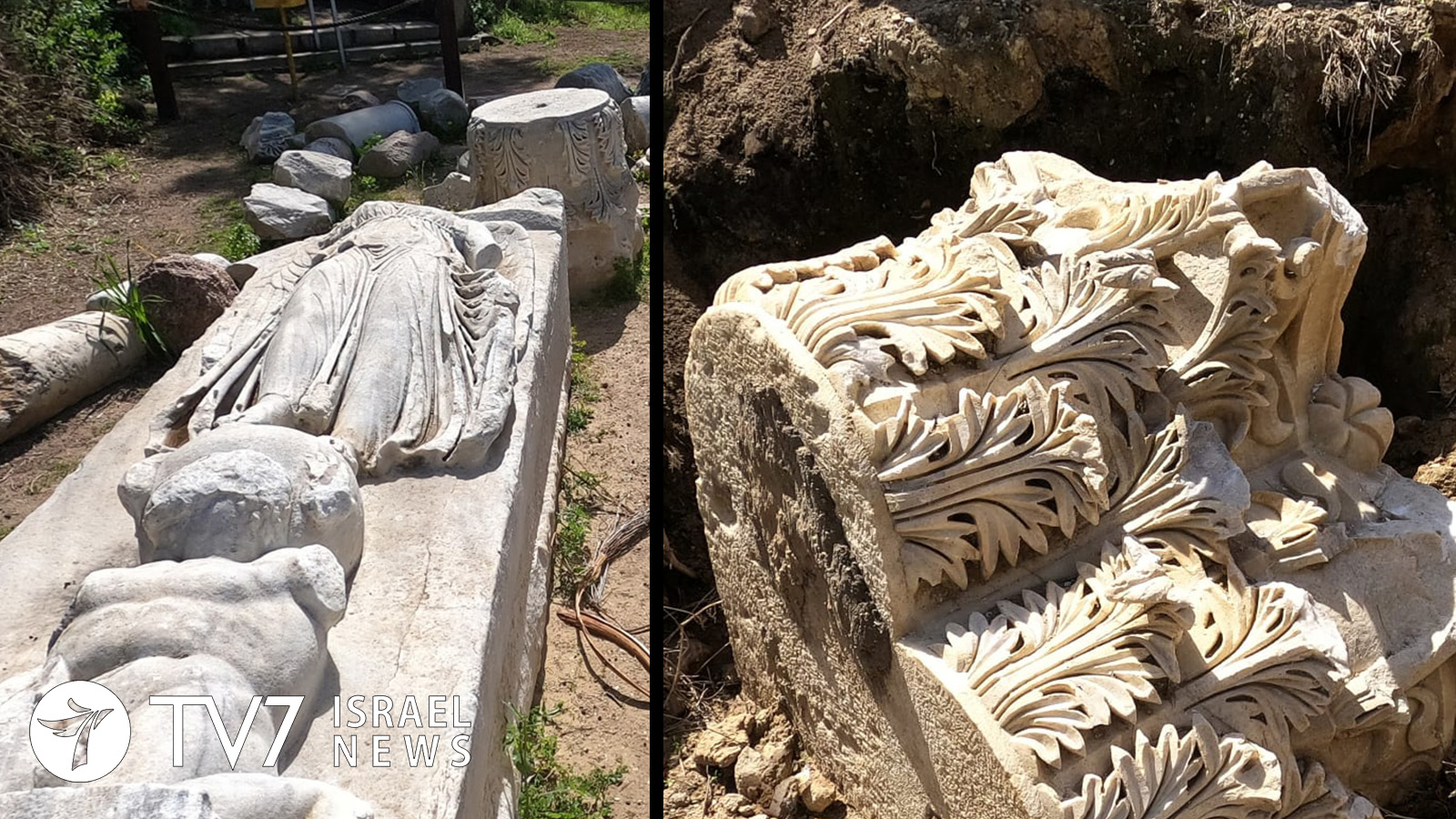The Israel Antiquities Authority (IAA) has recently revealed a magnificent 2,000-year-old basilica dating back to the Roman period unearthed in the Tel Ashkelon National Park, which is currently being meticulously restored.
A basilica was a public building around which public life of the city revolved around, to transact business, meet for social and legal matters or hold performances and religious ceremonies.
The stunning find is the largest of its kind ever discovered in Israel, constructed entirely from gleaming marble by Herod the Great – and whose family may have come from Ashkelon according to one historical source.
Herod the Great is regarded as the most prolific builders ever to have lived in the country. He is perhaps best known for building the Western Wall on the Temple Mount in Jerusalem’s Old City, considered the holiest site in Judaism. The 57-meter (187 foot) long section is all that remains today of a once far longer ancient retaining barrier outside the Second Temple, that Herod constructed as part of an expansion initiative on the ruins of the First Temple.
The writings of the historian Josephus noted Herod’s construction in Ashkelon of fountains, a bathhouse and colonnaded halls.
The basilica stood 13-meter high (nearly 43 feet), supported by rows of columns stretched up to the ceiling over a central hall with two side venues, say the IAA’s excavation directors Dr. Rachel Bar-Natan, Saar Ganor and Fredrico Kobrin.
“Today, based on the new archaeological evidence, we can understand the origins of the historical record,” they added, which includes the embedding of Herodian coins in the basilica’s ancient floors.
The floors, walls, columns and capitals were all constructed of gleaming marble that had been imported from Asia Minor by merchant ships that reached the shores of Ashkelon, which was once a prominent bustling trade city.
The IAA directors say that renovations of the building during the Roman Severan Dynasty in the 2nd and 3rd centuries AD included new marble architectural features and a small odeon (theater).
The basilica was abandoned after being destroyed by a powerful earthquake that hit the country in 363 AD, with the effects of the seismic waves still clearly visible on the floor tiles. Some of the fallen marble pillars and capitals were used to construct an industrial area during the Abbasid and Fatimid periods, and appear to have been later cut up into paving stones for grand walkways by the Ottomans.
Excavations during the British Mandate era turned up huge statues, including one of the Roman goddess of victory Nike supported by the god Atlas holding a sphere, as well as the Egyptian deity of Isis depicted as Tyche, the city’s goddess of fortune.
The conservation department of the IAA had been conducting complex preservation to restore the once great spendor of the odeon and the impressive basilica. About 200 marble items weighing hundreds of tons have been recovered, including dozens of column capitals with plant motifs, some of which were decorated with an eagle used as a symbol of the Roman Empire.
The impressive pillars and heart-shaped capitals weighing dozens of tons are now being hoisted back into place in the basilica, where the floor is undergoing restoration. Spectacular marble sculptures of ancient Ashkelon will be showcased in the southern part of the basilica, while additional columns will be positioned around the perimeter. Reconstruction of the odeon, expected to be completed in the coming months, will incorporate modern seating and a stage.
The public will then be able to welcome to see the magnificent basilica for the first time themselves, while witnessing ongoing efforts at the nearby basilica.
A new, 2 km long network of accessible paths designed to showcase and provide better access to the park’s unique nature, heritage and landscape is also being added to enhance the visitor experience. In addition to the basilica and the odeon, the route will connect the national park’s main sites such as the world’s oldest arched Canaanite gate, the famous wells of the ancient city and the Crusader walls.
A second trail will lead to the ancient wall and Ashkelon’s dunes, providing a glimpse of the rich flora and fauna to the south of the national park.
A visitor center located between the two paths in the center of the park offers what the IAA calls, “an experiential interactive way the vibrant life of the port city and its importance throughout the various periods.”
The IAA refers to its renewal project of the spectacular archaeological remains at the Tel Ashkelon National Park the shining of a “New Light on an Ancient Past.” The extensive development project is being led by the Nature and Parks Authority, the Ashkelon Municipality and generously funded by the Leon Levy Foundation.
Proud Ashkelon Mayor Tomer Glam hailed the national park as “one of the most important ancient sites, both in Israel and in the world, and time and time again it emerges as one of the most visited sites in the country.” He added that the latest additions “will contribute significantly to the park’s natural beauty and strengthen its status as the most beautiful and well-kept national park in Israel.”
Shelby White, founder of the Leon Levy Foundation, expressed happiness that the odeon “will now be restored and the famous Roman sculptures of Ashkelon will be returned to their original location. Thanks to this, visitors to the Ashkelon National Park from Israel and around the world will be able to imagine this great city in all its ancient glory.”
